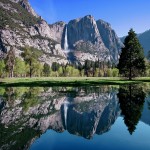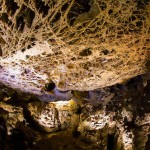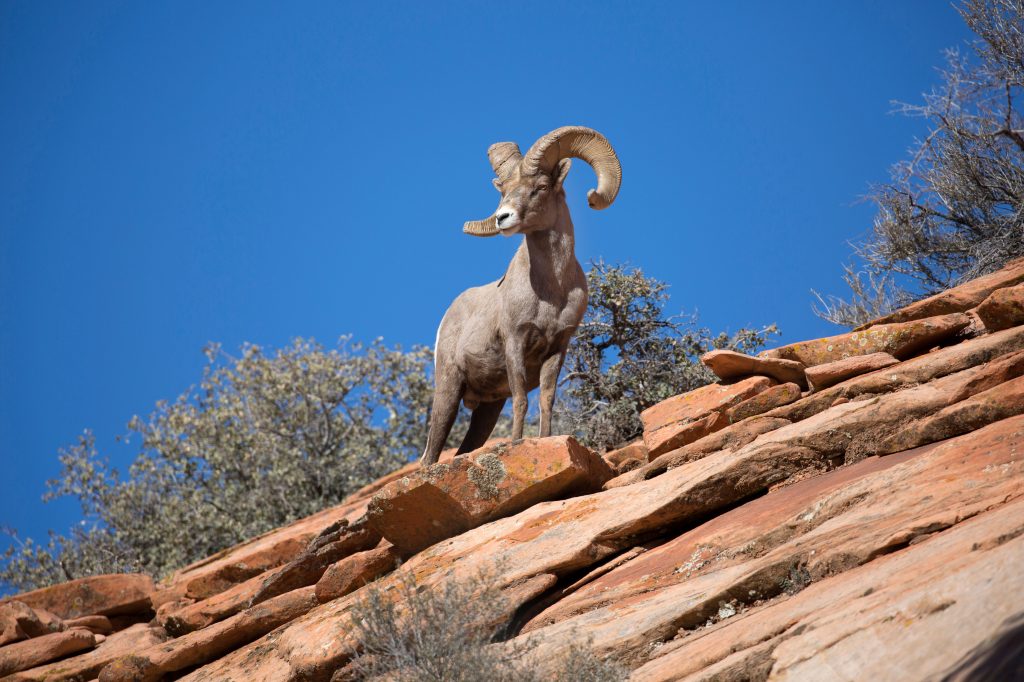Mesa Verde National Park- A Site of Special Cultural Significance
Arguably North America’s most important prehistoric archaeological site (and certainly the largest), Mesa Verde is on the UNESCO World Heritage List (1). This means it is not just important nationally, but internationally as a site of special cultural significance for humanity. It is a cultural area with an intense concentration of Pueblo population dating roughly from the 6th to the 12th centuries, with world famous cliff dwellings being amongst the most notable uncovered remains. Researchers have discovered and recorded over 4,400 archaeological sites on the plateau that sits in southwest Colorado. Many of the abandoned dwellings have survived intact for hundreds of years, thanks to the dry landscape and (in some cases) being sheltered from the elements. It is the second most visited recreational site in Colorado behind the Rocky Mountains National Park (2).
Established as a National Park by Teddy Roosevelt in 1906, it was recognized that National Park status was not and should not just be about preserving natural landscapes and features, but the cultural past too. Mesa Verde is widely recognized as the first archaeological site anywhere in the world to have received National Park status (1). Today, it is an important place for visitors and for researchers trying to piece together North America’s ancient past, and particularly of the Anasazi and Pueblo peoples who stand out amongst most other Native American peoples for their advances in urbanization.
Mesa Verde may be valued for its archaeology, but it also has an interesting ecology with protected plants and animals – so the role of a Park Ranger is not limited to working with cultural heritage.
History of Mesa Verde
The Pueblo people originally settled Mesa Verde around the 6th century and most of the buildings date between then and the 12th century (1). Extant remains suggest that settlement of the site could have begun as early as 12,000 years ago (3) and eventually, those nomadic seasonal settler moved to a basket-weaving culture. They must have been attracted by the rock overhangs under which most of the houses now sit because there is also evidence of semi-nomadic remains that predate the permanent settlement. The term “Mesa Verde Culture” does not just refer to the areas where they settled, but also to their unique architecture and material style (4). This is as much a cultural landscape as it is an ecological one.
From around the 6th century, we see evidence of widespread farming and a selection of settlement sites most conducive to agriculture – clearly, permanent settlement was part of the plan at this point. The settlers are known to have grown beans, squashes and corn; there is also evidence of continued hunting and gathering in the area (5) – mostly because of the short growing season and dry climate. Nevertheless, the population increased to several thousand by The Golden Age (3).
Around the 12th-13th century, the culture left the area – possibly due to environmental pressures such as drought. One of the key indicators of this collapse has come in the form of human remains and unusual nature of their death, suggesting both warfare and cannibalism in the final years (6) – both typical of societal collapse. We do know that some of these people moved later to sites in New Mexico and Arizona. The Pueblo people who now live there are most likely descendants of the people from Mesa Verde and sites like it (3).
The site became very quiet until it was signed into law as a National Park in 1906. Several explorations took place between the mid 18th century and the late 19th century and though no archaeological excavations took place, it is in the late 19th century the area acquired the name Mesa Verde (7). Interest through the 1870s led to calls for Federal and / or State protection of the ruins and the cultural landscape. Tourism had increased, people were collecting souvenirs and damaging the integrity of the site. Calls for protection intensified through the 1890s and finally, it became a National Park in the early part of the 20th century – the same year that the Federal Antiquities Act passed through Congress. From there, official excavations began – including the building of museums and measures to protect extant remains, the buildings, artifacts and the cultural landscape.
The Flora of Mesa Verde National Park
You’d be forgiven for thinking that the conservation and protection of Mesa Verde National Park would focus solely on the archaeological remains. However, there is a delicate ecology of plants and animals here that are subject to conservation laws and protection – some 8500 acres of federally designated wilderness (8). There are scrublands to the south of the archaeological remains and forest to the north.
The four major botanical groups at the semi-arid ecology of the park are (9):
- Steppe shrub at the lowest elevations (including sage brush and rabbit brush valleys)
- Pinyon-Juniper forest -Though these are not the only two tree types at this elevation, they are dominant in the forest. The trees are also very small, giving the area the nickname of “The Pygmy Forest”
- Mountain shrubs - Another vast green area is the zone of shrubs which include flowering perennials, gambel oak, mountain mahogany and others you might see in this ecology type
- Pine and fir at the highest elevations include more gambel oak, but also douglas fir and ponderosa pine – a stark contrast from the semi-arid nature of the lower valleys
- Correctional Officer
- There is a temperate near-wetland zone threading along the river. The unique geology creates a microclimate which has allowed for the growth of several types of willow and cottonwood
Not only is Mesa Verde a National Park for cultural history, but it is also part of the NCA (Network Conservation Area) for both Colorado Natural Heritage Program and The Nature Conservancy.
Flora Conservation Issues at Mesa Verde
Top of the agenda for the last few years at Mesa Verde has been burning – some planned, some not. Planned burning occurs at the mid-elevation “Pygmy Forest” (8).This has demonstrably helped the shrubs in the lower valleys thrive against encroachment that had become a problem in recent years (9). The forest is now half the size it once was and those shrubs can now thrive again. The National Park Service now has a program of regular burning to ensure that one ecology type in the area is not threatening another.
Wildfires have become increasingly a problem at Mesa Verde National Park since a particularly large one devastated the higher elevation forest in 1989 (8); most subsequent wildfires have occurred at the higher elevation woodland – devastating many acres of ponderosa pine and douglas fir, the loss of which has been major cause for concern. The land there is much wetter thanks to the higher elevation, and it is believed that they should have suffered wildfires little more than once in a century (10) previously. With the effects of climate change taking hold, wildfires on the damper higher elevations are now much more common.
The lower elevation woodlands are home to some unique specimens that require individual protection. One of the juniper trees has a trunk width of 52”; another has been dated to around 1300 years old, and possibly contemporary with the final century of Pueblo occupation (9). If true, then these are as much part of the cultural landscape as they are of the natural landscape.
Fires are also conducive to the spread of some invasive species in the park. In particular, there are concerted efforts at Mesa Verde to control the spread of the musk thistle and cheat grass – both of which colonize quickly at the end of a natural brush fire (11). It is believed that these invasive species stem the growth of the indigenous species, dominating access to nutrients and groundwater. Musk thistle is native to Europe and somehow made it to Mesa Verde in the 1970s – proving once again that even in the modern era, the need to be vigilant against alien plants and animals continues.
The Fauna of Mesa Verde National Park
The varied landscape of Mesa Verde National Park is home to many animal species, some of which have protected status either because they are threatened or because the environment in which they live is delicate.
During a visit to the park, you may see one of many species of bird. The park is designated IBA (Important Bird Area) for Colorado, with over 5000 acres of breeding grounds and activity area for 200 native and non-native species (12). Amongst them are the Mexican Spotted Owl which is a threatened species native to the park (13). They stand out for having dark eyes and lacking in ear tufts, unlike most other owl species around the globe. The park is home to some 70+ types of mammal, 16 types of reptile, 5 amphibian, 1000 insects and 6 types of fish – two of which are non-native (12). The park is prime fishing area in Colorado, with the reservoirs leading into the rivers being regularly stocked with brown and rainbow trout and large-mouth bass (14). None of the fish species in the rivers and lakes are protected.
Several species of rare butterfly have come to depend on certain flowering plants that are native to the park, demonstrating once again the problems of concern for animals is often tied into the availability of plants that they prefer.
Protecting Native Species at Mesa Verde
The black swallowtail butterfly mentioned above is a protected species; the NPS considers its population an issue of concern in itself but also because of threats of invasive plant species that are displacing the equally rare native plants upon which it feeds (12). There is no better demonstration of the need to balance ecology when the survival of a type of animal is dependent on the survival of a type of plant. Researchers are fully aware of the symbiotic relationships that make up an environment.
We mentioned above that the Mexican Spotted Owl is threatened; in truth, it is just one of the many native to the park that are subject to conservation laws. In 2012, two programs – MAPS and HMN – were brought in to monitor populations and to highlight some of the concerns to bird populations that were being studied (15). It was successful for hummingbirds in particular as they are a migratory species that return to the park every year, aiding national and international efforts to keep a track on bird populations.
Air quality is now under threat, and this could affect the ecology of Mesa Verde National Park. Pollutants from a proposed new coal fired power station will affect trees and shrubs, and consequently have knock-on effects for animal life; there will also be problems for human health should the park be subject to persistent levels of pollutant. Park staff are presently monitoring the situation (16).
The Archeology of Mesa Verde National Park
Archaeological conservation comes with its own unique issues. As we mentioned above, the main reason for establishing Mesa Verde as a National Park was to protect the integrity of the archaeological remains (7). Treasure hunting was a big problem, and though there are now stringent laws in place to prevent heritage crimes against Mesa Verde, protection of the site includes not only the remains above ground that people can visit – but also the potential fragile remains that are beneath ground too. The Federal Antiquities Act (1906) protects all cultural remains across the country (17).
Archaeological remains are subject to several threats:
- Erosion of the soil, whether through logging, flooding or drought, can damage fragile archaeology. Often, keeping them in the ground is the best way to protect them. It is imperative that when found, they are recorded in as much detail as possible
- “Souvenir” removal is a crime, even if the site has not been found, recovered and recorded. Park staff cannot protect what they do not know about
- Instability of above ground remains. The age of the buildings, particularly in areas of highest concentration, require regular checking and maintenance to ensure that integrity stays intact for present and future generations
- Water from seepage or runoff of the cliff (which sites above the largest and most impressive structures) can causes several problems including softening the ground and lead to instability in the foundations (18)
- Water seepage can also lead to the growth of mosses and other plants that can get into the stonework and damage the structure. Thankfully, silicon caulk directs most of this away
- Wildfires (1) which can damaged as yet undiscovered archaeological sites that are away from the main settlement site – since the wildfires of 1989 and after, extensive cataloguing has begun with in the park to protect
- The air pollution mentioned above and the types of substances that are expected to be part of the emissions from the new coal fired power stations, are known to cause erosion to some archaeological remains (16)
Ongoing Conservation Challenges of Mesa Verde
There are two major issues presently at Mesa Verde National Park.
Of immediate concern is the increase of coal-fired power stations across the local states, and one in the immediate vicinity, which can have profound consequences for the wildlife and the important archaeological remains within the park. A lower air quality will strangle plant life and have potential knock on effects for the animal life that rely on rare plants – particularly the number of threatened species within the park and the potential to upset the present ecological balance. We also know that the pollutants will affect the integrity of the cultural remains.
The second concern is the spread of wildfire. There is a systematic program of fire management, particularly in the forests of the mid-range elevations, which had been encroaching on the scrubland. Fire damages not only plants, but also the soil beneath and potentially – any archaeological remains there too. Controlled, manageable fire keeps land healthy but it is still destructive.
Climate change is a growing problem, as it is anywhere else in the country, and we are yet to understand the problems it may bring to Mesa Verde. Whatever the changes to the environment, each National Park will be faced with its own set of problems. With an increase in precipitation, the scrub may give way to woodland and lead to greater erosion of the rocks and the archaeological sites above ground. A decrease in precipitation will increase desertification and lead to the dying off of many native species – some of which are already threatened. At Mesa Verde, a recently discovered fault line near the settlement means that part of the area has already closed off (18). What the long-term consequences are for the site is yet to be fully understood.
There must also be a special note about human traffic. Visitor numbers, though not limited to Mesa Verde National Park, are known to cause erosion with trampling and accessing fragile parts of the monuments that are fragile. It may never come to limiting the number of visitors, such as has happened at Giza or Machu Picchu, but it is an area of concern.
Sources
(1) http://whc.unesco.org/en/list/27
(2) https://irma.nps.gov/Stats/Reports/National
(3) http://www.nps.gov/meve/learn/historyculture/index.htm
(4) https://books.google.co.uk/books?hl=en&lr=&id=O1LF3icXOLIC&oi=fnd&pg=PA145&dq=prehistory+mesa+verde&ots=ilTljQdowy&sig=yZmqrUoa77Ga44l4p524ZtxCJqU#v=onepage&q=prehistory%20mesa%20verde&f=false
(5) http://www.saa.org/AbouttheSociety/Publications/AmericanAntiquity/Volume65Number1January2000/CannibalismWarfareandDroughtintheMesaVer/tabid/746/Default.aspx
(6) https://www.visitmesaverde.com/media/399911/mesa-verde-national-park_timeline.pdf
(7) http://www.nps.gov/meve/learn/nature/index.htm
(8) http://www.nps.gov/meve/learn/nature/plants.htm
(9) http://www.fs.fed.us/rm/pubs_rm/rm_gtr258/rm_gtr258_176_178.pdf
(10) http://www.nps.gov/meve/learn/nature/upload/musk_thistle_invasive.pdf
(11) http://www.nps.gov/meve/learn/nature/animals.htm
(12) http://www.nps.gov/history/local-law/anti1906.htm











